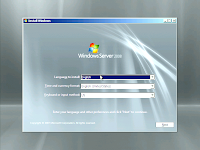An operating system is the collection of software that controls how the computer works. If you have a PC or IBM format computer chances are pretty good that you are running a Windows Operating System from a company called Microsoft. Windows Operating Systems have been around since this and you should be familiar with some of the names and chronology of their development.
Below is a diagram showing the basic development of the Windows operating system from 1990 to 2013
Windows Operating Systems | |
1990
| |
1991
| |
1992
| |
1993
| |
1994
| |
1995
| |
1996
| |
1997
| |
1998
| |
1999
| |
2000
| |
2001
| |
2002
| |
2003
| |
2004
| |
2005
| |
2006
| |
2007
| |
2008
| |
2009
| |
2010
| |
2011
| |
| 2012 | |
2013
| |
The most recent Windows operating system has
the unique feature of being designed to run on desktop computers, laptops,
tablets (Microsoft
Surface) and even smart phones. This concept could have many
advantages in a technology world where the proliferation of different devices
and operating systems can seem overwhelming. Unfortunately, this has required a
fundamental shift in the user experience which resulted in a difficult backlash
from many consumers.





